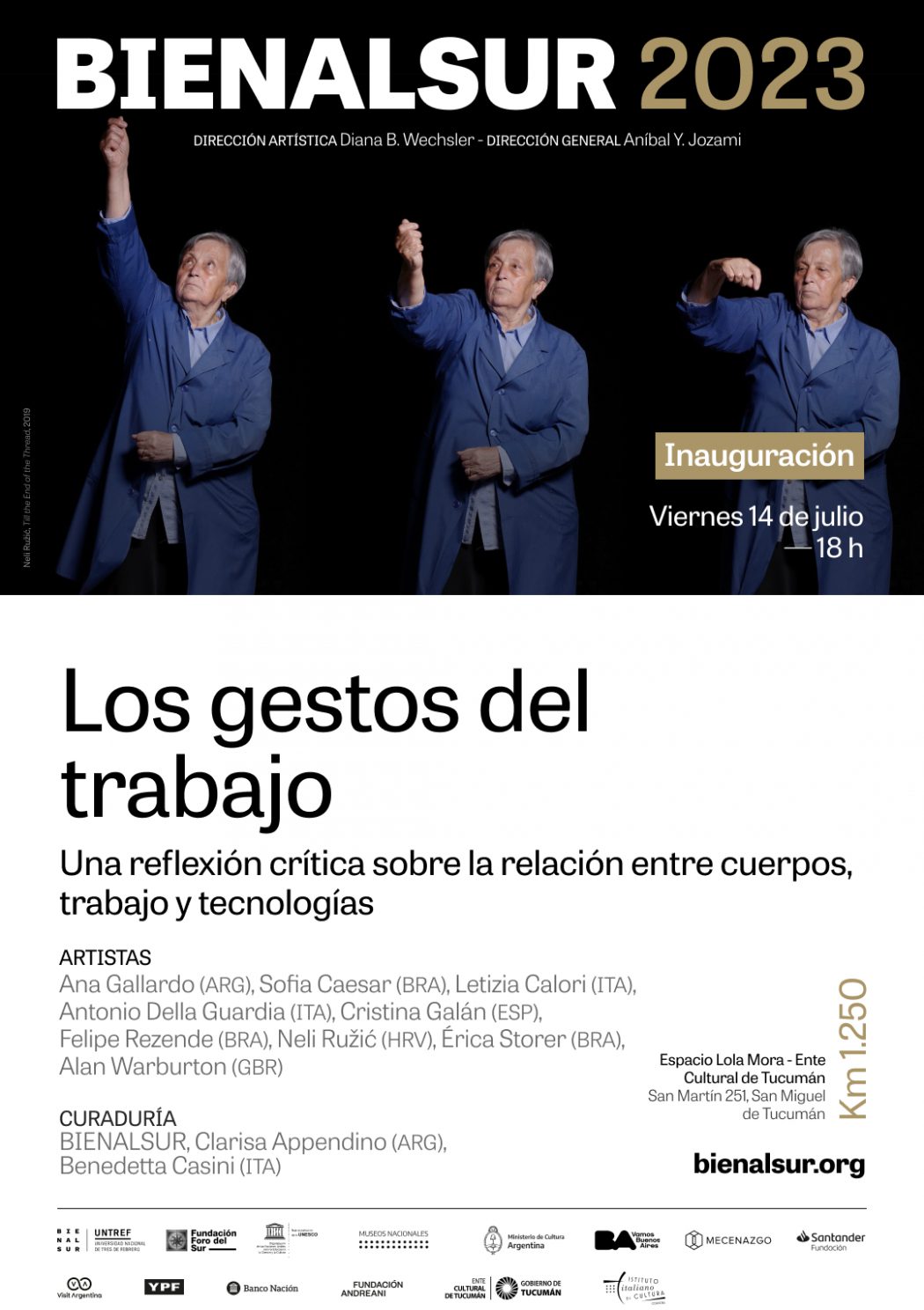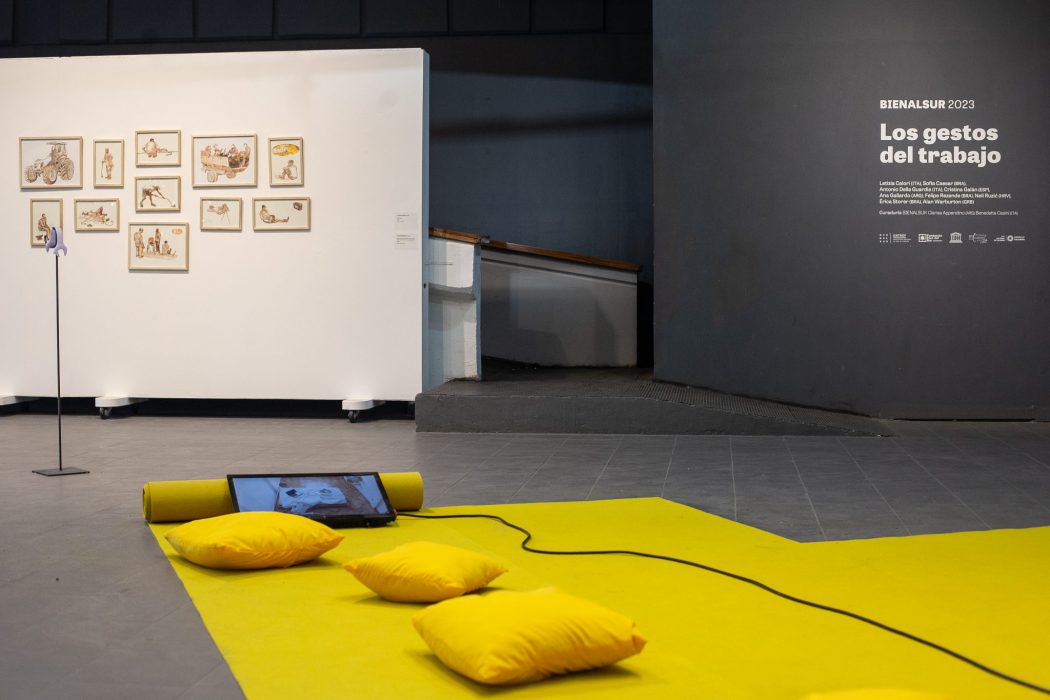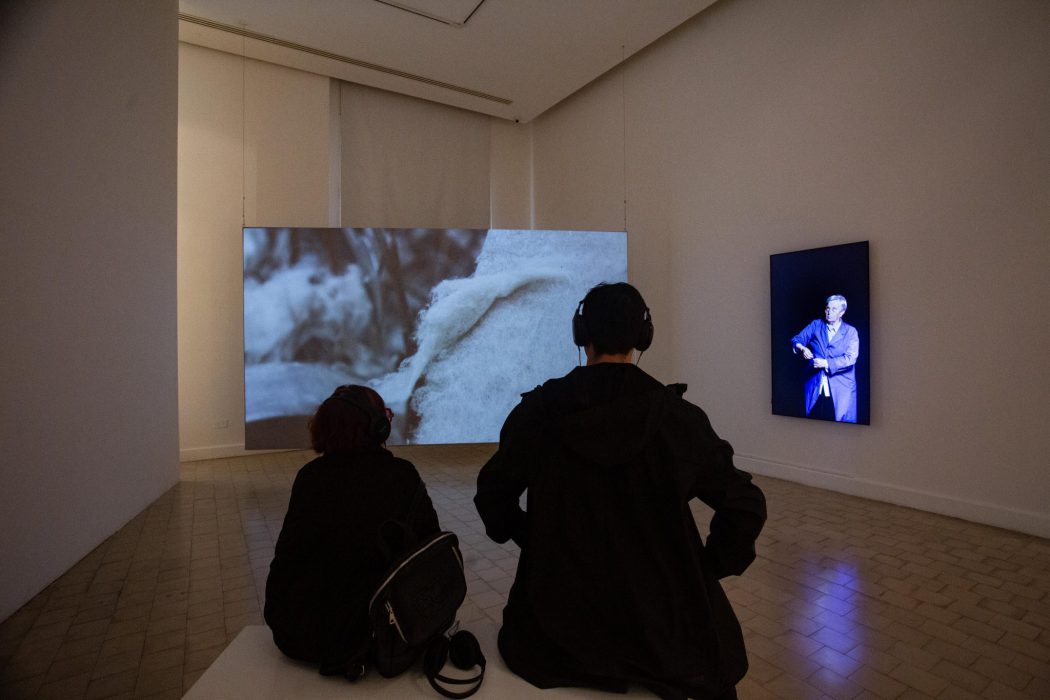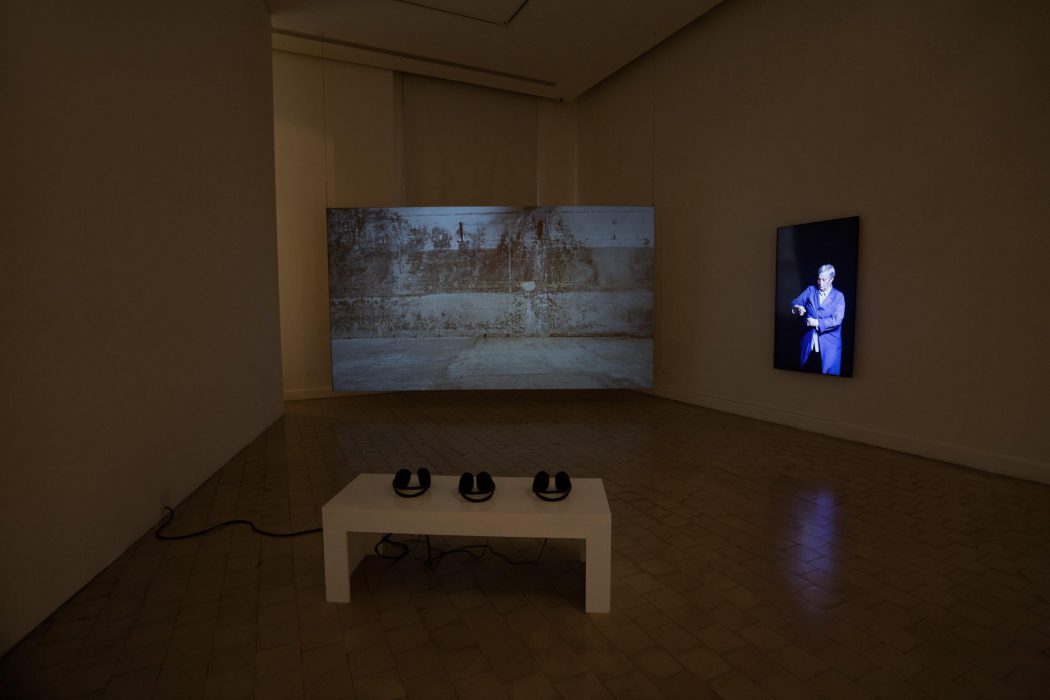Érica Storer de Araújo (BRA), Alan Warburton (UK), Ana Gallardo (ARG), Sofia Caesar (BRA), Neli Ružić (CROACIA), Cristina Galán (ESP), Antonio Della Guardia (ITA) Felipe Rezende (BRA) Letizia Calori (ITA)
Accounts of societal life and customs, as we know them, rely primarily on the observation of objects, be they cultural products, tools, or utensils. From a knife or a shovel to industrial techniques and automated machinery, our gaze overlooks movements, postures and actions performed upon these objects. Based on gestures, this exhibition focuses on the movements of labour and looks at bodies through the strength of the arms, the posture of the back and the bending of the legs. These works critically examine the relationship between bodies, work and technologies in contemporary societies. They shed light on diverse bonds of work, ranging from the neoliberal bureaucratic overproduction of the financial world to precarious rural and industrial labour. In this regard, the itinerary shows the corporeal dimension in the contemporary work patterns of home office and entrepreneurship – euphemisms that reveal new links and gestures in a context of deregulation of the working day, a feature of post-industrial capitalism. From a historical and political perspective, these works also present gestures without objects. Tools disappear and the emphasis lies on bodily movements that have become obsolete or have been drastically transformed into other forms of work due to industrial and agricultural technification. Alan Warburton and Leticia Galán’s projects are permeated by the degradations of a 24/7 society based on permanent connectivity and the relentless production of content. Their impact on contemporary subjectivities can be seen in the bodies presented in the works of both artists. Similarly, Érica Strorer de Araújo, Sofia Caesar and Ana Gallardo focus on the progressive blurring of the boundaries between work and leisure space. Office objects take over unmade beds and deckchairs, and even climb up a concrete wall in defiance of gravity. The diversity of jobs included in Ana Gallardo’s CV, barely related to her artistic work, serves as a reminder of the instability and precariousness inherent to labour relations in post-Fordist society. In contrast to these dystopian imaginaries appropriated by the omnipresence of labour, Neli Ružić portrays the nostalgic gestures repeated by Ana, a former Croatian textile factory worker. The Dalmatinka factory in Sinj, one of the main production centres of the former Yugoslavia, closed down in the 1990s to become a venue for receptions and events. Ružić pays homage to work, a fundamental tool of women’s emancipation in socialist regimes, whose dissolution in the context of liberal democracy is evident in the traditionalist regression of gender mandates. On the other hand, in the works of Letizia Calori, Felipe Rezende and Antonio della Guardia the tools and gestures of work are softened, stripped of the roughness and rigidity traditionally associated with manliness and productive efficiency. They become versatile objects and actions whose humorous anomalies bear a subversive potential.
Clarisa Appendino and Benedetta Casini






